“Think of It as a Genocide of Journalists”
An interview with a member of the Palestinian Journalists’ Syndicate about the unprecedented killing of reporters in Gaza.
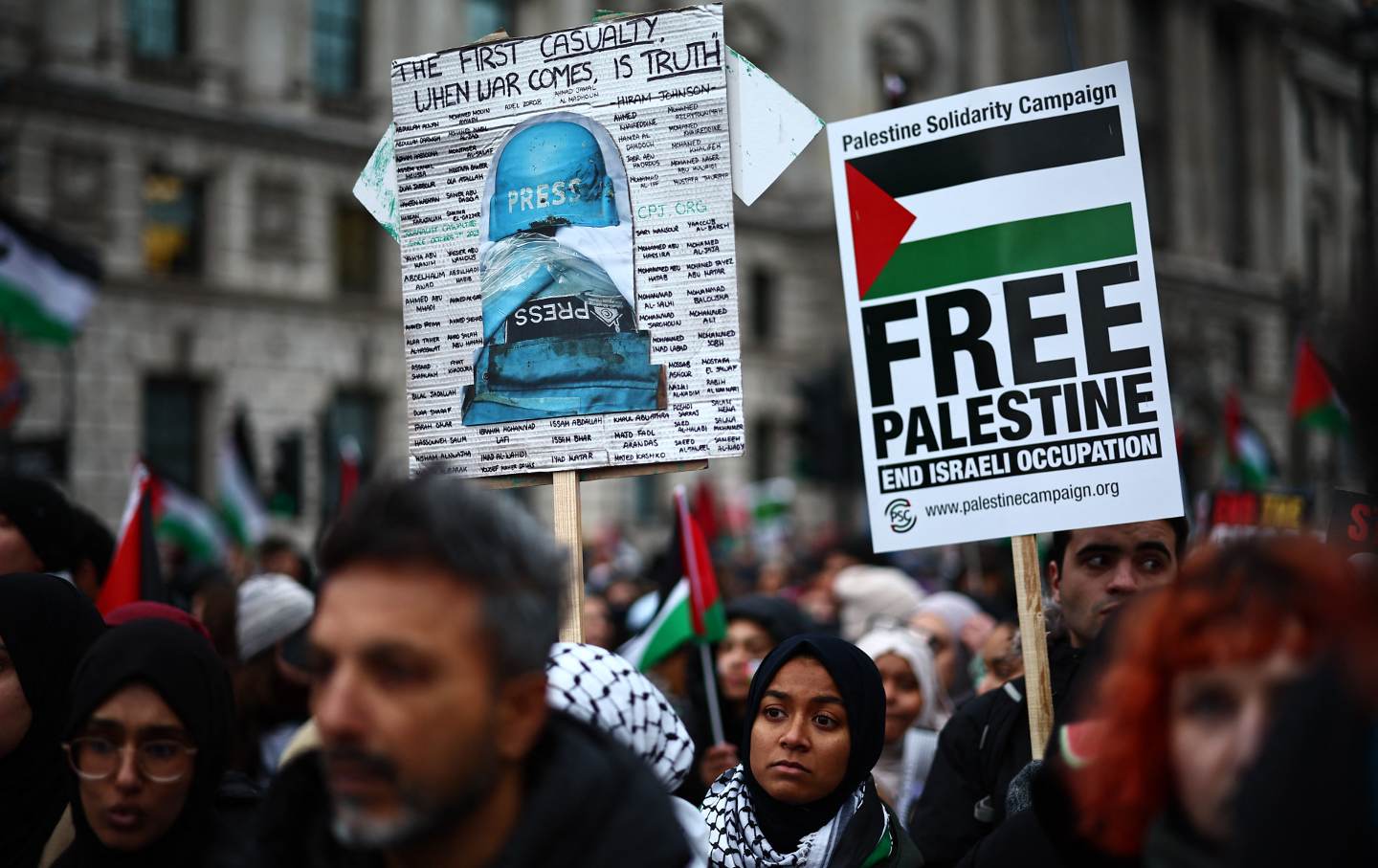
Pro-Palestinian activists and supporters carry placards, including a sign featuring names of journalists killed during the latest conflict, during a National March for Palestine in central London on January 13, 2024.
(Henry Nicholls / AFP via Getty Images)Last May, the Committee to Protect Journalists published a special report on the Israeli military’s targeted killing of Palestinian journalists. The CPJ investigated 20 instances since the turn of the millennium in which Palestinian journalists—most infamously, the Al Jazeera correspondent Shireen Abu Akleh—were slain by IDF soldiers and found that in none of them was anyone held responsible.
Half a year later, journalists are once again under attack again in Palestine, this time at an unprecedented rate. Since the Israeli military began its assault on Gaza last October, at least 75 Palestinian journalists have been killed, according to the CPJ. But that figure is likely an undercount; other organizations closer to the ground with less lag time between data updates put the number at over 100. Some Palestinian journalists were killed in targeted strikes on their homes, others in hospitals and schools where they were reporting, and others on the road, traveling between assignments and the makeshift encampments to which they’d been displaced. CPJ has called Israel’s war the deadliest in modern history for reporters. And once again, it appears likely that there will be little to no accountability.
In the wake of this slaughter, members of the Palestinian Journalists’ Syndicate, the premier organization for Palestinian reporters living and working in their homeland, have abandoned their usual duties and shifted into emergency mode, doing what they can to keep their colleagues in Gaza alive.
Shuruq As’ad, a correspondent for MCD Radio Montecarlo and member of the syndicate, has spent the past several months trying to secure basic necessities such as blankets and food for reporters in Gaza, a process that has involved appealing to international organizations for help and raising funds from abroad. I spoke with As’ad recently to discuss the different efforts ongoing at the syndicate and how the current attacks on the press in Palestine compare to those of previous years.
This interview was translated from the original Arabic and edited for length and clarity.
Lylla Younes: Let’s start with the origins of the Palestinian Journalists’ Syndicate.
Shuruq As’ad: It was founded in 1979, first under the name “The Arab Journalists Syndicate of Jerusalem.” It wasn’t possible to use the word “Palestine” in those days [before and during the First Intifada], but after the Palestinian Authority was formed in 1994, we were able to change it to the current name.
LY: In what parts of Palestine do your members work?
SA: We move around. For example, I have a Jerusalem ID, so I typically work with our colleagues in Jerusalem. We also have representatives all over the West Bank—in Jenin, Nablus, Ramallah—and in Gaza. At the moment, moving around is very difficult, because the checkpoints are treacherous. We have about 56 journalists that have been detained since October 7. Some have been released, but about 80 percent remain behind bars, and many have been treated brutally. The Israeli army invaded their homes and arrested them for no reason other than for what they’ve written.
When the war started, everything we were working on was put on hold, and we formed a crisis unit with various tasks.
LY: Can you describe some of the things the crisis unit is doing to support reporters in Gaza?
SA: Some of us are working on the documentation of each day’s events, collecting information on what’s happening with our colleagues on the ground. We’re also doing our best to help injured reporters receive treatment outside of Gaza, which has been very, very hard. The third thing we’re doing is working with the Egyptian Journalists’ Syndicate and the International Federation of Journalists to prepare legal filings for the International Criminal Court, just like we did with Shireen Abu Akleh and Yasser Murtada [Palestinian reporters killed in 2022 and 2018, respectively]. Preparing a legal filing is not an easy thing, but after our experience with Shireen and Yasser we have a better understanding of how to do it right.
LY: What kind of information are you collecting about your colleagues on the ground in Gaza, and how are you managing to source that information?
SA: The documentation aspect is very important. If someone was martyred, we want to figure out what outlet they worked for, whether they were displaced at the time, and when and how they were killed. We want to know whose homes were targeted and whether any of their family members were martyred. You can’t imagine how much work this is, verifying each of these facts, because there’s no electricity and the phone lines are cut. We try to follow our colleagues on the ground each day to know where they are. Most used to work in the north of the strip, in Gaza City [where the media offices were concentrated]. But now, 1,200 journalists are displaced. Not a single one of them is working from home. So every day we follow them to see if they’re stationed in the hospitals or near the Rafah Crossing. We try to find out what their needs are on any given day—Internet access, eSIMs, jackets, blankets, tents—and fulfill those needs.
Popular
“swipe left below to view more authors”Swipe →LY: How are you able to mobilize these supplies? Where are you sourcing them from?
SA: From inside Gaza. There is nothing getting to them from outside of Gaza, because they aren’t letting anything through the Rafah Crossing. Of course, one of the big problems with this is that many of the things they need are not available anymore. For example, I’ve been working with a young woman to secure jackets for our reporters. She’s spent the past two days going around Rafah and Deir al-Balah and hasn’t been able to find any, and even if she did find some, they would cost around 300 shekels [or $80] apiece, whereas before they cost about 50 shekels [or $13] each. So this is very hard. We are all trying to raise money from friends and family in the US and other places.
LY: Are you getting help from other organizations outside of Palestine?
SA: The syndicate is in contact with a number of international organizations—the Committee to Protect Journalists, the International Federation of Journalists, UNESCO—to support these fundraising efforts, but it is very hard. If you look at photos of Rafah today, you will find that you can hardly fit a finger between people because it is so crowded [from the displacement]. The situation in Gaza is not something that the syndicate can manage on its own, to be honest with you. The need is so much greater than the supply.
We don’t have any money, so we rely on project funding. We try to import safety gear, but the Israelis usually block these efforts so we have to appeal to international organizations to assist us. We have lawyers that we hire whenever one of our reporters is arrested or injured. We are trying as hard as we can to work with our partners to secure our reporters some measure of stability, so that they can be, first of all, safe, and secondly, so that they can have the tools they need to report. Because, bravely, they continue to report. They are not only displaced, but 70 percent of them have lost their homes in the bombings. Almost everyone has family or close friends who have been martyred. The most basic things, they don’t have. There was a time when they would call us and say, “We need to eat. We can’t find anything to eat.”
LY: How about now? Are reporters in Gaza managing to eat?
SA: Now, we are providing them with food, and I won’t tell you how. All of it is coming from inside Gaza. At one point, we were trying to get things through the border with Egypt. We managed to convince some humanitarian organizations to consider journalists in their shipments of aid into Gaza, and they sent in blankets and tents at one point, but not anymore. Our reporters are working, and at the same time, they are trying to gather supplies.
LY: With almost everyone in Gaza currently displaced from their home, how are ordinary Gazans getting their news?
SA: This is a very big challenge, and not just because of the displacement. You have around 66 media headquarters that have been bombed and 24 distribution networks that don’t work anymore. And in case you’re not familiar, most people in Gaza get their news from the radio because they don’t have televisions at home. But now, with most of the radio stations bombed, we’re looking for alternatives. For example, we’re trying to figure out if we can do a joint venture with the BBC to get some time on the airwaves.
LY: Conditions have also deteriorated in the Occupied West Bank since October 7, with the Israeli military conducting repeated raids on Palestinian cities like Jenin and Tulkarem. How are journalists faring there?
SA: We have documented hundreds of violations against reporters in the West Bank, between beatings and unlawful detentions. They are being mistreated at checkpoints, where soldiers force them to take off their clothes and break their cameras. Many have been threatened—I wrote a whole report about this issue—you can’t imagine the number of threats, not just from soldiers and police, but also from armed settlers. I went to Nablus a while ago and it was absolutely terrifying, between the threats, the detentions, and the beatings. I was sitting at the checkpoint wearing my press vest and helmet and scared that the settlers were going to start beating me, can you imagine? In Jerusalem, the situation is also a disaster. Every week, when we go to cover the Friday prayers, the army and the police attack us directly. Not to mention the amount of cybercrime, which is a whole other issue, with huge amounts of posts being taken down and accounts hacked, even if it takes time.
LY: Can you remember another time in your career when the conditions for journalists in Palestine were this difficult?
SA: In my lifetime, no. But there is something very important that I have to note, which is that what is happening right now is nothing new for us as journalists in Palestine. It’s more brutal. It’s more aggressive. You can think of it as a genocide of journalists, a massacre. More than 100 reporters have been killed in Gaza in 90 days. Every day we are losing one or two of our colleagues. But this is not new. This is the result of a political system in which the police, the mainstream media, the parliament, and the judiciary are all complicit. Their refrain is always the same—that we are murderers and terrorists, that we are ISIS, that we are animals and not human. There is no immunity or protection for Palestinian journalists, the same as for Palestinian doctors. All of the protections under international humanitarian law don’t apply to us.
If you think about all the major events of the past 20 years—the invasion of 2003, the 2006 war between Israel and Lebanon, the evictions in the Sheikh Jarrah neighborhood of Jerusalem, the repeated incursions on Jenin, the attacks on Al Aqsa mosque—we have been on the front lines getting attacked. Between 2003 and October 6, 2023, the Israelis martyred 55 reporters, three of which were non-Palestinian. Between 2012 and October 6, 2023, we recorded over 9,000 violations against journalists, with around one or two violations documented per day. And that’s just the 2000s. We’re not even talking about the days before we began documenting everything, for example, during the First Intifada in the early 1990s. But what we are finding is that every year, the aggression is higher, higher, higher, higher.
LY: From those numbers, it appears that the Israelis have killed more Palestinian reporters in the past three months than in the past 20 years. How do you make sense of these figures?
SA: I don’t think the targeting is happening just because they want to block our images and words, even though, of course, that is part of it. This has always been a war of images and words, since 1948. But their tactics are also about creating fear in order to drive Palestinian journalists out of their jobs and out of their homeland. Their goal is to make civil society impossible in Palestine, and journalism is a big part of that.
Which brings me back to what we’ve been doing at the syndicate, day in, day out. We check in with our colleagues in Gaza. We ask them, are you alright? Do you have food, do you have water? Did the money we sent arrive? We are working 24 hours a day. And they are doing the same thing as us—they are working as journalists, and at the same time, they are trying to keep the people around them alive.
More from The Nation
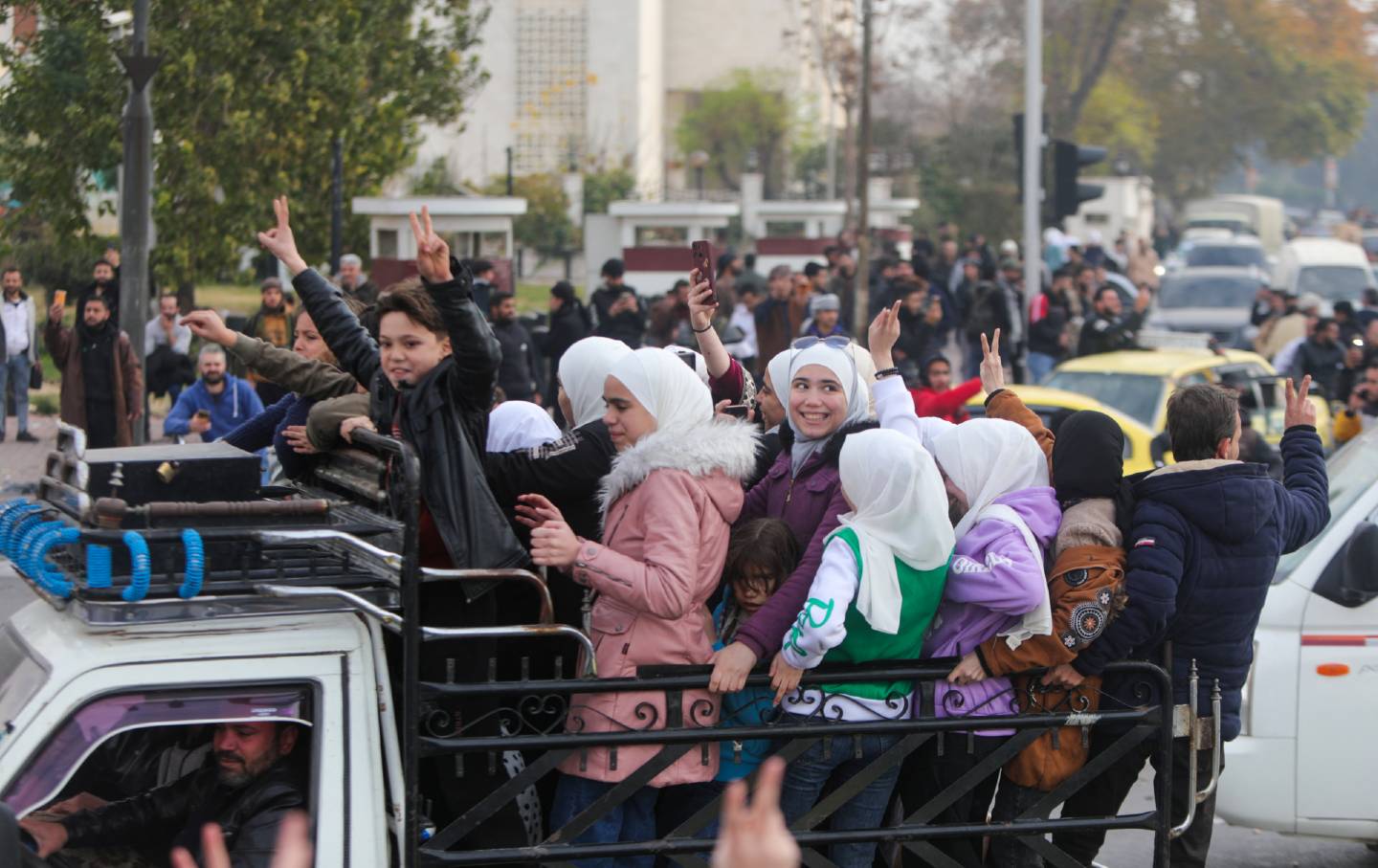
Celebrations in Syria May Be Premature Celebrations in Syria May Be Premature
The speed of the Assad dictatorship's collapse stunned even the opposition. But the result is a power vacuum that Israel and Turkey have already moved to occupy.

The Fall of Syria Changes Everything The Fall of Syria Changes Everything
Retired diplomat Chas Freeman and writer Pascal Lottaz discuss what happens now that Damascus is in the hands of Hayat Tahrir al-Sham.
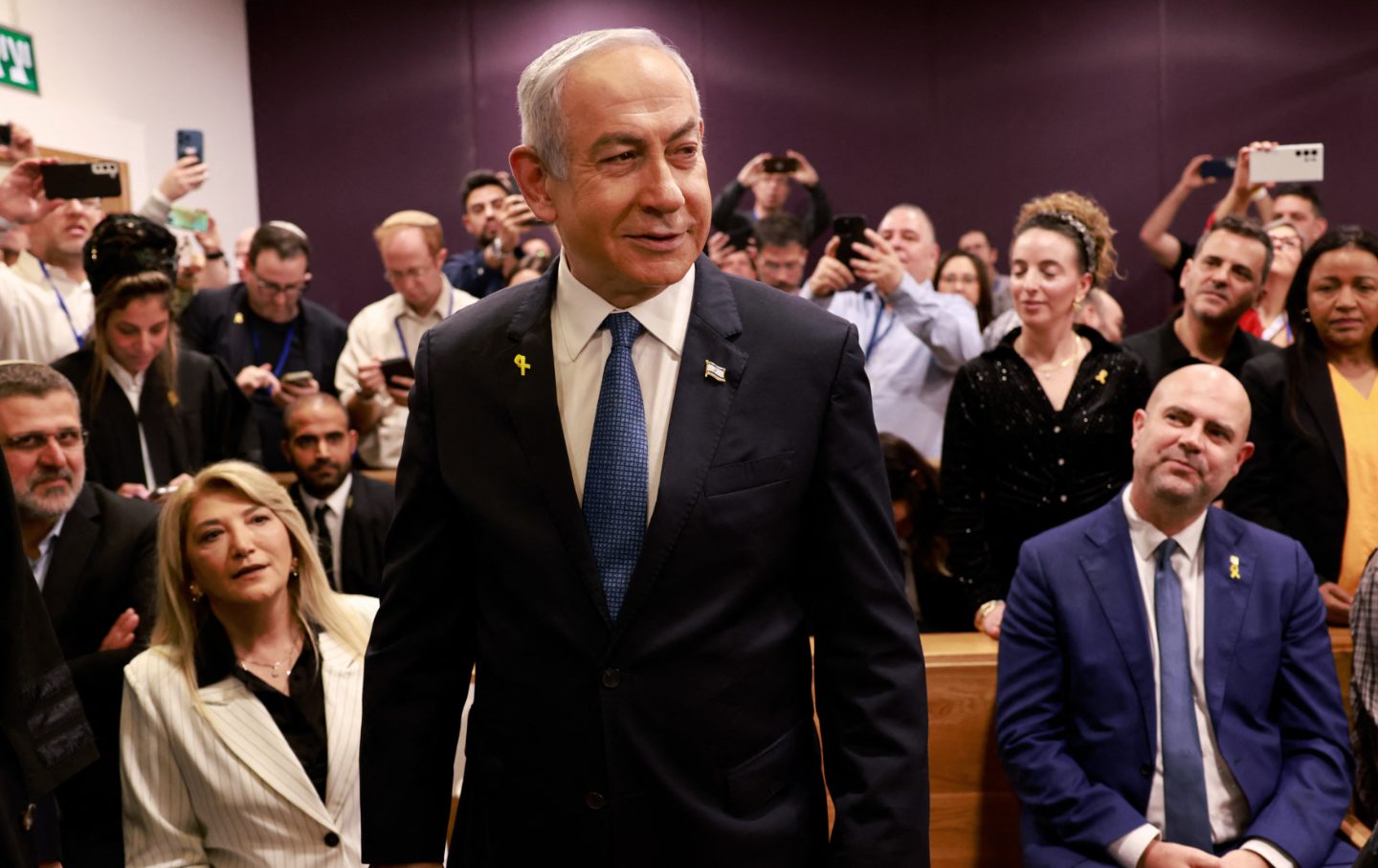
Netanyahu Must Be Brought to Justice. But We Can’t Stop There. Netanyahu Must Be Brought to Justice. But We Can’t Stop There.
This genocide is a massive criminal undertaking, and we must hold as many of its perpetrators accountable as we can.

My Brother, Chef Mahmoud Almadhoun, Died Because He Fed Gaza’s Starving Citizens My Brother, Chef Mahmoud Almadhoun, Died Because He Fed Gaza’s Starving Citizens
His killing by Israel sent a chilling message that no one is safe, including humanitarians who stand in the way of Gaza’s erasure.
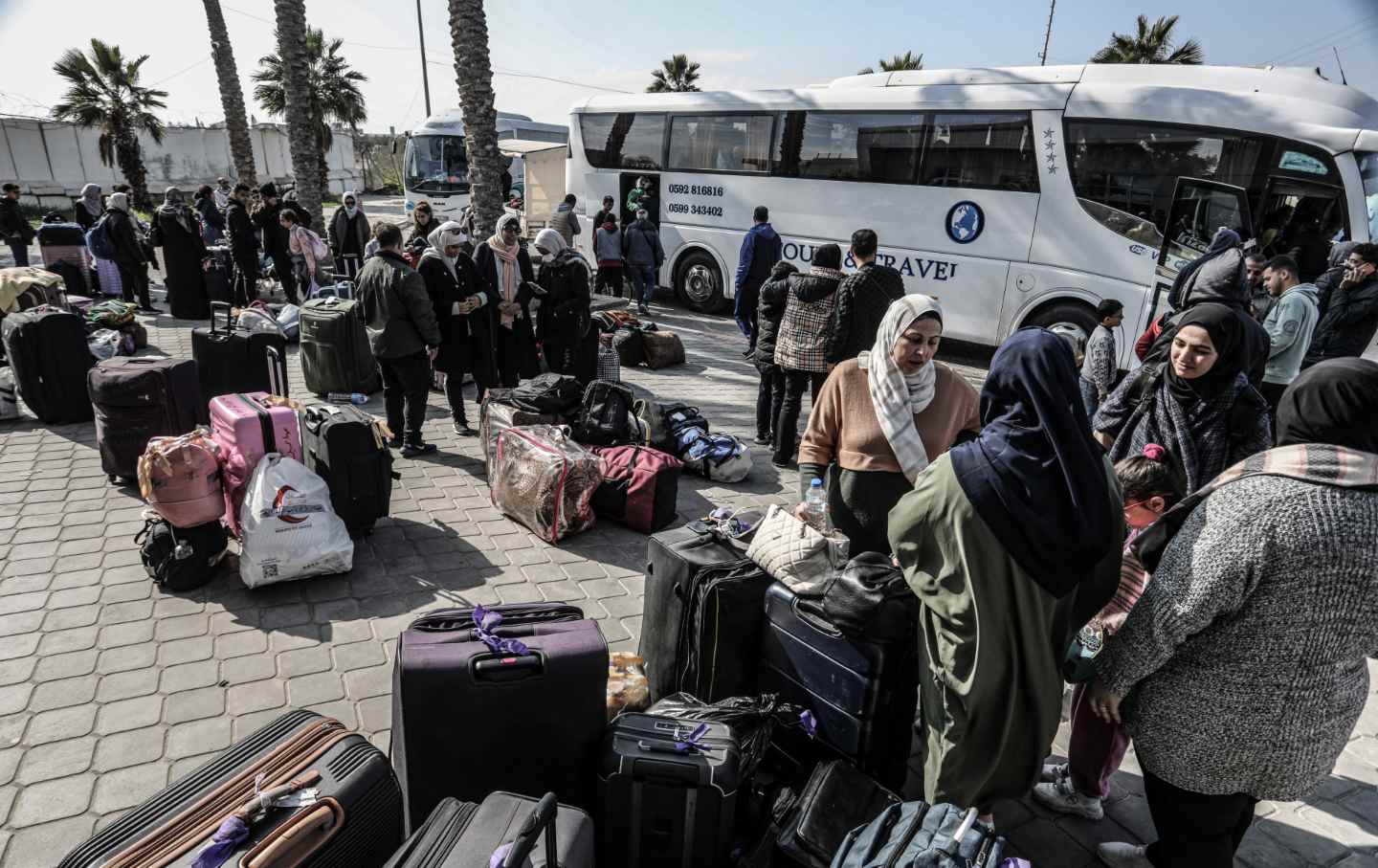
The Underground Network Helping Gazan Refugees Survive in Egypt The Underground Network Helping Gazan Refugees Survive in Egypt
A patchwork of volunteer-run mutual aid organizations has sprung up to tackle the severe problems facing people fleeing genocide.
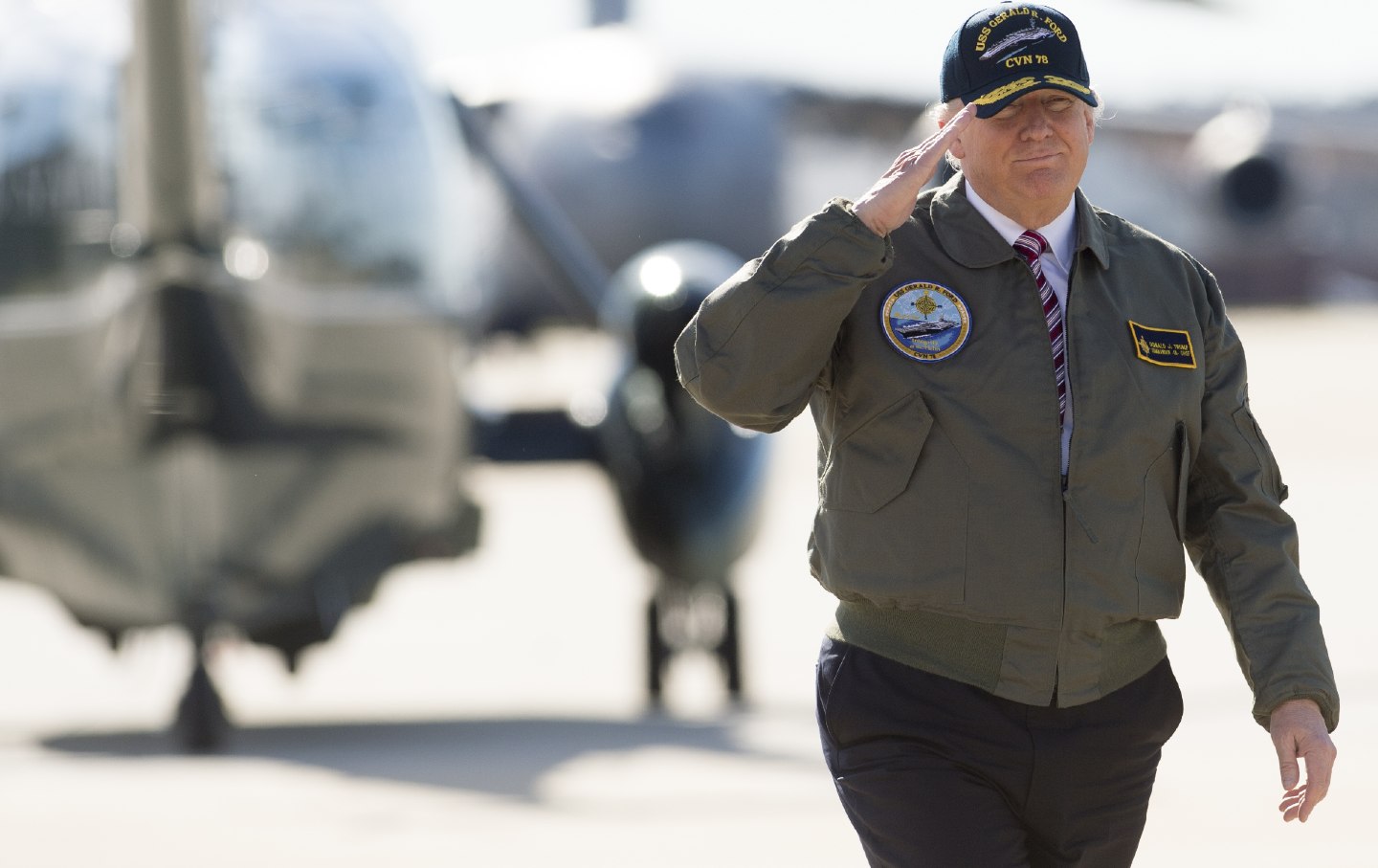
The Dangers of Trump’s Foreign Policy The Dangers of Trump’s Foreign Policy
Strategic incoherence and factionalism reign.


